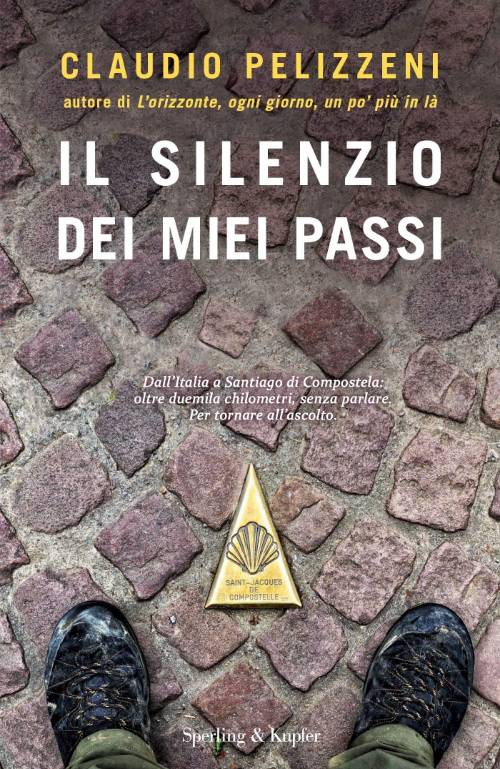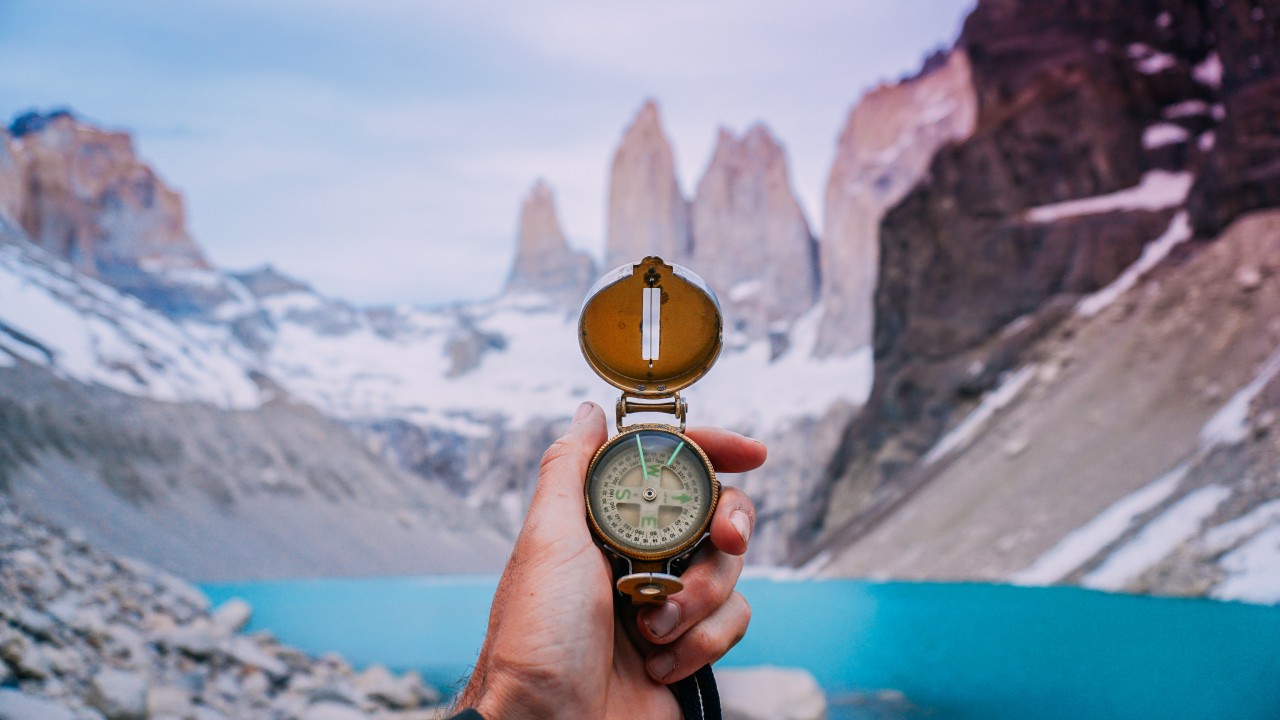
11 minutes reading time
(2185 words)
How to approach Torres del Paine trek - The longest way
The emotions that the Torres del Paine trek gave me are difficult to explain. However, I tried to tell you through the story of a night, the one between the fifth and sixth day (read the post here).
Now, since it is one of the most famous treks in the world, I try with this article to tell you about my experience in a sort of diary, hoping to be of help to those who want to try their hand at the big Q circuit, but not only.
The available circuits:
There are three of them, the most famous, popular, and affordable is the W circuit, which is the one in the southern part of the park that includes the best highlights. I tell you about it in the diary of days 1/2/3
Recommended duration: 3 nights / 4 days
Difficulty: medium
The great circuit O, which includes the entire natural park, obviously including the W.
Difficulty: medium-high
Duration: minimum 6 nights / 7 days
Circuit Q, or the most extensive, or the "mochillero" because it avoids any paid means and is, therefore, the cheapest. Consider half a day more than the O circuit.
Medium / high difficulty
Minimum 6 nights / 7 days
Recommended 8 nights / 9 days
When to go: the best period is from October to April and above all, it is the only period in which you can have the choice on the circuit to go. In fact, from the 15th of April, the Q and the O are not passable except with an authorized guide.
What to put in the backpack:
A premise is a must: the climate in Patagonia is fleeting and unpredictable, it can change in a few minutes. So basically bring clothes for the summer and winter. At night the temperature drops below zero. In my opinion, it is very important to always have dry clothes for the night, so I brought two changes, one for the day, in layers or onions (t-shirt, polaron, shell jacket, and kway) and one for the night (t-shirt, thermal shirt, same polaron, sweater or fleece).
Do not forget gloves and headgear as well as hiking pants, I did it in jeans but I took excessive risk, the rain is just around the corner.
Food: always bring food for at least three days longer than planned. The Gardner Pass can be closed due to bad weather and you will have to wait or go back. It is often not possible to refuel, especially out of season.
Buy rice, cheese, oil, freeze-dried soups as a tasty, but light, condiment. For lunch, bread and cheese, tuna or salami are better; you cannot cook along the path, but only in the dedicated areas, so basically in the evening.
Don't forget biscuits and snacks for quick and easily assimilated sugars, I also brought a tub of dulce de leche to combat sudden hypoglycemia.
Here is my backpack:
1 cup
1 saucepan
1 fork
2 Swiss Army Knives
1 headlamp
1 rope
1 kg of rice
4 freeze-dried soups
3 cans of tuna
4 bags of sliced cheese
6 sachets of Parmesan cheese (fake ... We're in Chile !!! But it wasn't bad!)
2 kg of sandwich bread
400 grams of dulce de leche
6 packs of biscuits
3 packs of legumes
1 sweatshirt
1 sweater
1 overall
2 t-shirts
1 thermal shirt
1 headphone
1 already shell
1 polaron
Gloves
4 pairs of socks
4 pairs of underpants
1 solar panel
1 power bank
And then all my technical video/photo equipment. (GoPro, cameras, videos, microphones, batteries, memory cards, tripods ...)
Tent, a good sleeping bag, insulating mat, stove, gas can, lighters and off we go.
The weight of the backpack will make the difference, I started at about 20 kg on my shoulders, I finished with about 15 kg.
Always consider that a good rule of thumb is not to exceed 20% of your weight with the weight of the backpack.
Ready? Let's go!
Day 1: administrative office - Italian camp
We leave early in the morning with buses from Puerto Natales, around 7 / 7.30.
You arrive no later than 7, in the low season even with a reserved seat you will not be guaranteed departure. When they are full they leave!
You cross the entrance door to the park, pay the ticket (18000 pesos, about 25 euros) and then you are sorted in the various starting points of the circuits: Torres is for those who do the W or the O circuit, for the Q the departure is at the administrative office of the park.
You reach your destination around 12, you register and you leave.
The first section, from administration to Paine Grande, is 11 km mostly flat. There are no difficulties except the strong wind from the Gray Glacier to the west. The maps speak of 5 hours of walking, personally, I took 3 hours and 20 minutes. You can camp in Paine Grande, but I recommend that you make an extra effort and get to the Italian camp, a further 8km away. We begin to climb, the height difference is now equal to 200 meters, the expected duration is two and a half hours of walking. I have used two scarce.
Here you can camp for free and the environment is that of the mochilleros. Enjoy!
Difficulty: low
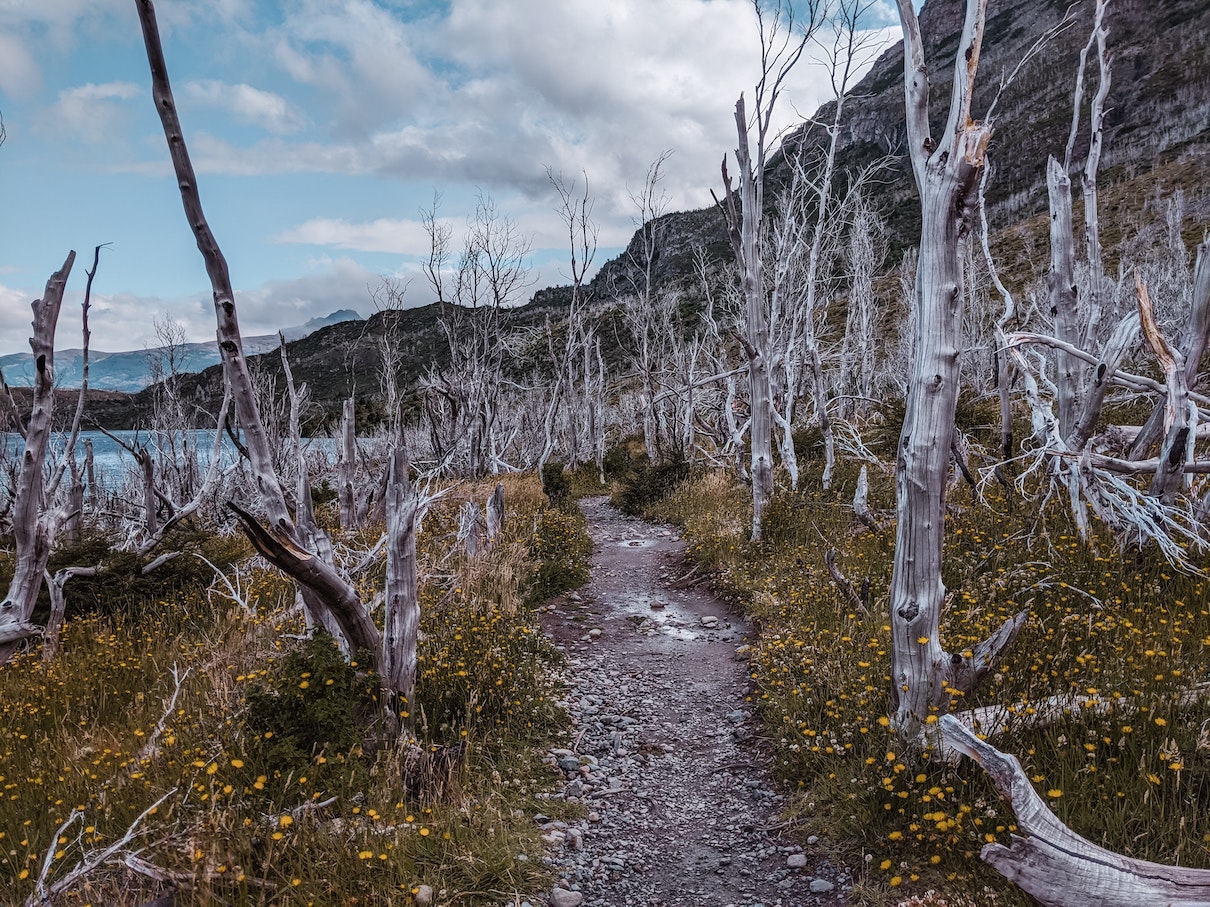
Day 2 Italian camp - Los Cuernos refuge
Wake up calmly, we are only at the beginning, and beautiful unloading of your backpack, walk the walk to the British mirador. About two and a half hours, nice uphill, but you can leave everything at the camp and take down the tent for lunch when you return. The km is 6.5, but you have to double them because once you reach the mirador you can only go back. Enjoy one of the most beautiful views of the whole park, you are in the middle of an amazing valley.
I left around 9 am and returned to the camp around 2 pm, I had lunch and I dismantled the tent to get back on the road at 3 pm. Cuernos is 6 km away, the walk is all up and down not particularly demanding, I would say it takes about two hours to walk. I have seen and met people who on the same day arrived as far as the Torres camp, but in this case, they left no later than 1 pm and arrived at their destination exhausted in the evening, we are talking about 36km !!!
Cuernos is a paid campsite, but you can take hot showers.
This was one of the coldest nights with the thermometer hitting minus 8 ...
Low difficulty
Day 3 Los Cuernos - Torres camp
One of the hardest days of my Torres del Paine trek, but also one of the most beautiful.
20 km practically all uphill with an altitude difference of about 700 meters. The first part is wonderful, you can enjoy beautiful mountains on your left and Nordenskjold lake on the right. At a certain point, you will find the deviation towards the Chilean camp and from there you will enter a wonderful valley with a downhill stretch that will make you lose all the difference in altitude gained in the previous 4 hours of walking.
At the Chilean camp do not believe the signs, the Torres camp is still 3 km away, all uphill in beautiful wood.
It will seem almost unattainable at some point, but as I told you, it is one of the hardest days.
Medium difficulty
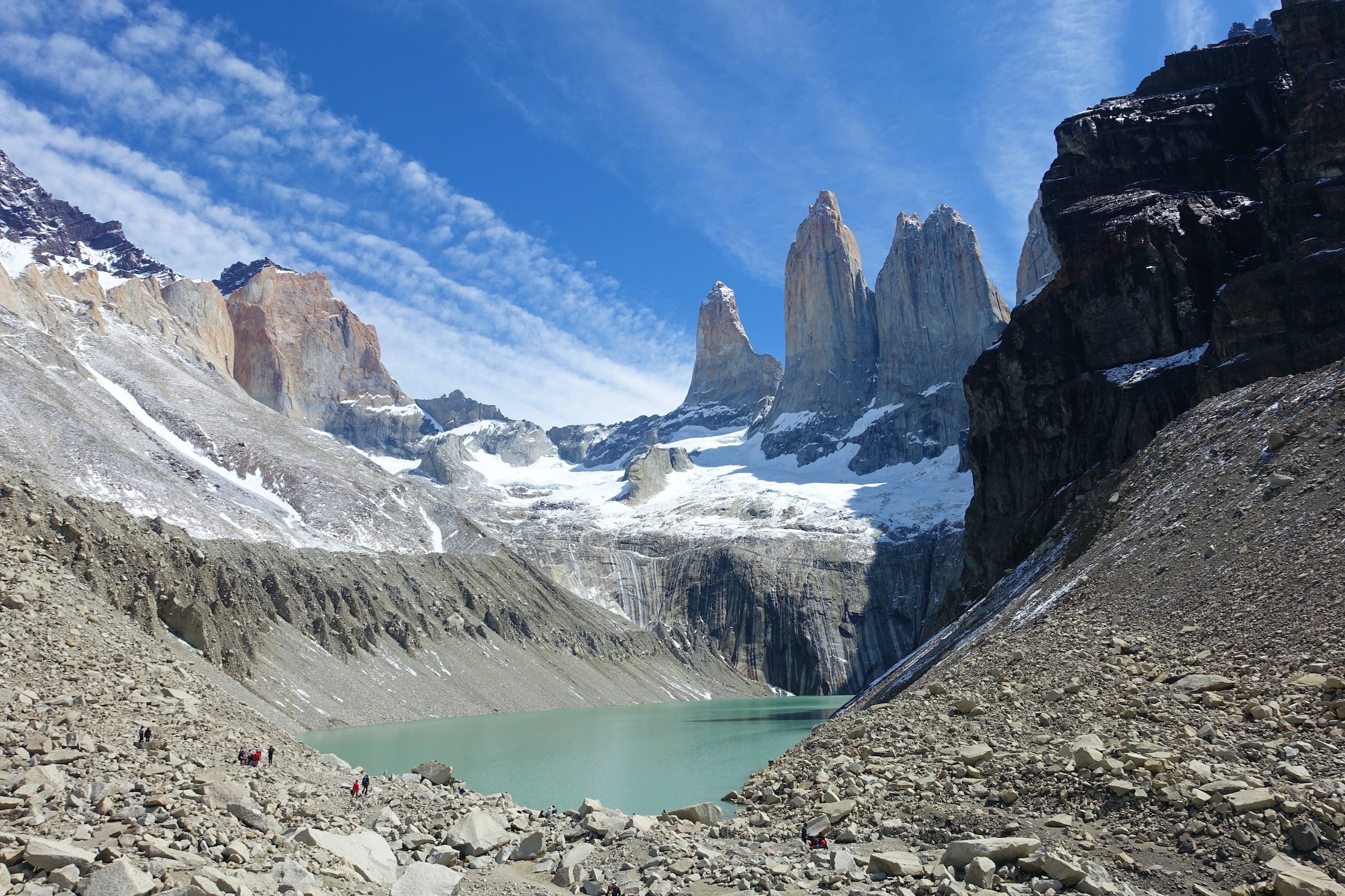
Day 4 Torres camp - Seron camp
The efforts of the day before are amply rewarded by one of the most beautiful dawns you can experience in your life. Climb up in the dark to the mirador Base Las Torres, one kilometer by 500 meters in altitude, considering about 40 minutes of pure effort.
Upon arrival it will not seem real: a green lagoon and in the background the three towers that recall our peaks of Lavaredo. At dawn, they turn red, and at that point, they are just as they are in our Dolomites.
There are always some crazy people who jump into the lake but beware, it can be a big thermal shock for your body, the lake water comes from the glacier and exceeds zero degrees by a few degrees.
Today what awaits is the long descent to the Hotel Las Torres where, those who have chosen to travel only the W circuit, will end their journey.
We, on the other hand, stoics, will go on up to the Seron camp, 9 infinite kilometers beyond. The route is semi-flat and accompanies the Paine river. The camp is located at the base of the mountain and if you arrive at a decent time you can even jump into the river.
This last stretch, from the Hotel Torres to Seron is also the first stage of the O circuit which ends, after a week, like the W always at the Hotel Las Torres.
Difficulty: low
Day 5 Seron camp - Los Perros camp
A difficult day, the fifth. Usually, only the 18km to the Dickson camp is covered. However, the weather had been favorable, so far exempting me from the rain so when I arrived at Dickson at 2.30 pm I opted to continue to Perros for another 10 km, all mostly uphill.
It is a difficult day, one of the hardest, but also one of the most beautiful sceneries.
It runs along the entire Paine lake up to the Coiron guardhouse, where the rangers will allow you a warm break and offer you a good mate. Many small ups and downs will accompany you to the impressive view of the Dickson refuge and camping, probably the most beautiful place in the park to stay overnight. This is a paid area, but you can recharge your camera batteries. The climb to Perros is not difficult, the height difference is equal to 400 meters in 10 km, but everything is concentrated at the beginning of the route and the end. In the middle one of the most beautiful woods, I've seen in my life with very tall trees and incredible plays of light.
The arrival in Perros is one to leave you speechless, the view of the glacier and the surrounding mountains is to lose your head. Then the lake, which rose from the glacier in which the surrounding mountains are reflected, is shocking
In the camp you can breathe the most beautiful air of the park, there are only a few of us and we make a group knowing that the big day is just around the corner.
The shelter house where you cook has a stove and if you want you can sleep inside.
Difficulty: medium
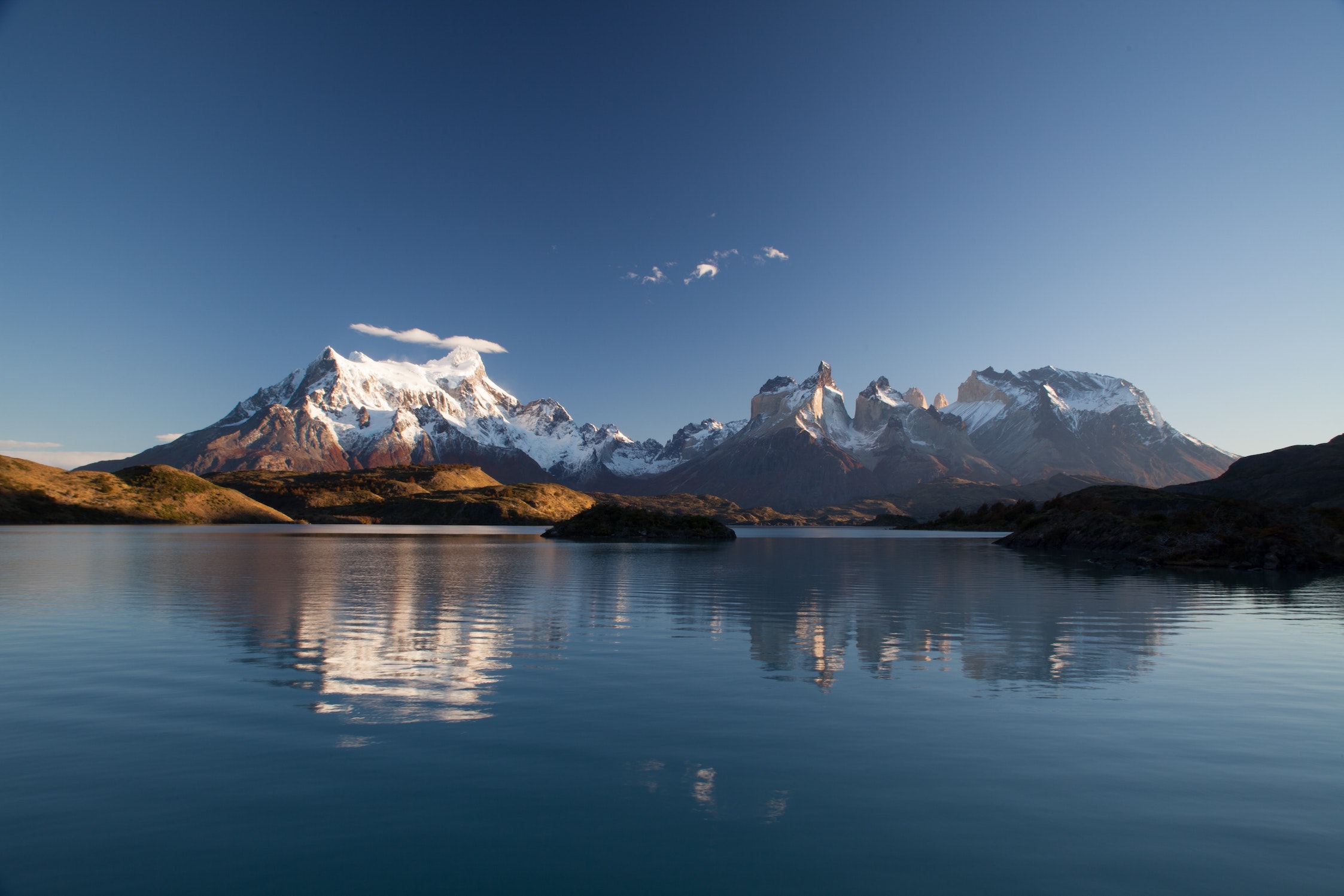
Day 6
Los Perros camp - Gray camp
The first stretch, from Perros to Paso is the most difficult of the whole park: 7.5 km, with an uphill gradient of 600 meters and then 800 to descend.
For the legs, I suffered more the descent than the climb. For the climate and sudden changes, however, the worst point is precisely the pass where you can often find freezing wind, snow, and ice on the ground. The first kilometer, by the way, is in the middle of the mud, before leaving the forest and then meeting only large stones.
The ascent takes less than two hours, while the descent takes about two and a quarter hours. As soon as you cross the pass before your eyes the incredible view of the Gray glacier or the tail of Campo de Hielo Sur. A millenary glacier of rare beauty. The reddish wood that opens on the slopes of the mountain is also very beautiful and on the descent, to Paso, you will also be accompanied by rivers and waterfalls.
Sleeping in Paso can be a rather cold idea, especially if the wind blows from the north-west of the glacier, but it is also one of the most beautiful camps that enjoy a privileged view.
I decide to cover the entire 4-hour journey that separates me from the Gray camp and the 7 km are of rare beauty. Pronounced climbs and descents, paths on the coast of frozen fjords, suspension bridges 50 meters high.
Difficult path especially because it arrives at the end of a day that is not at all simple.
Difficulty: high
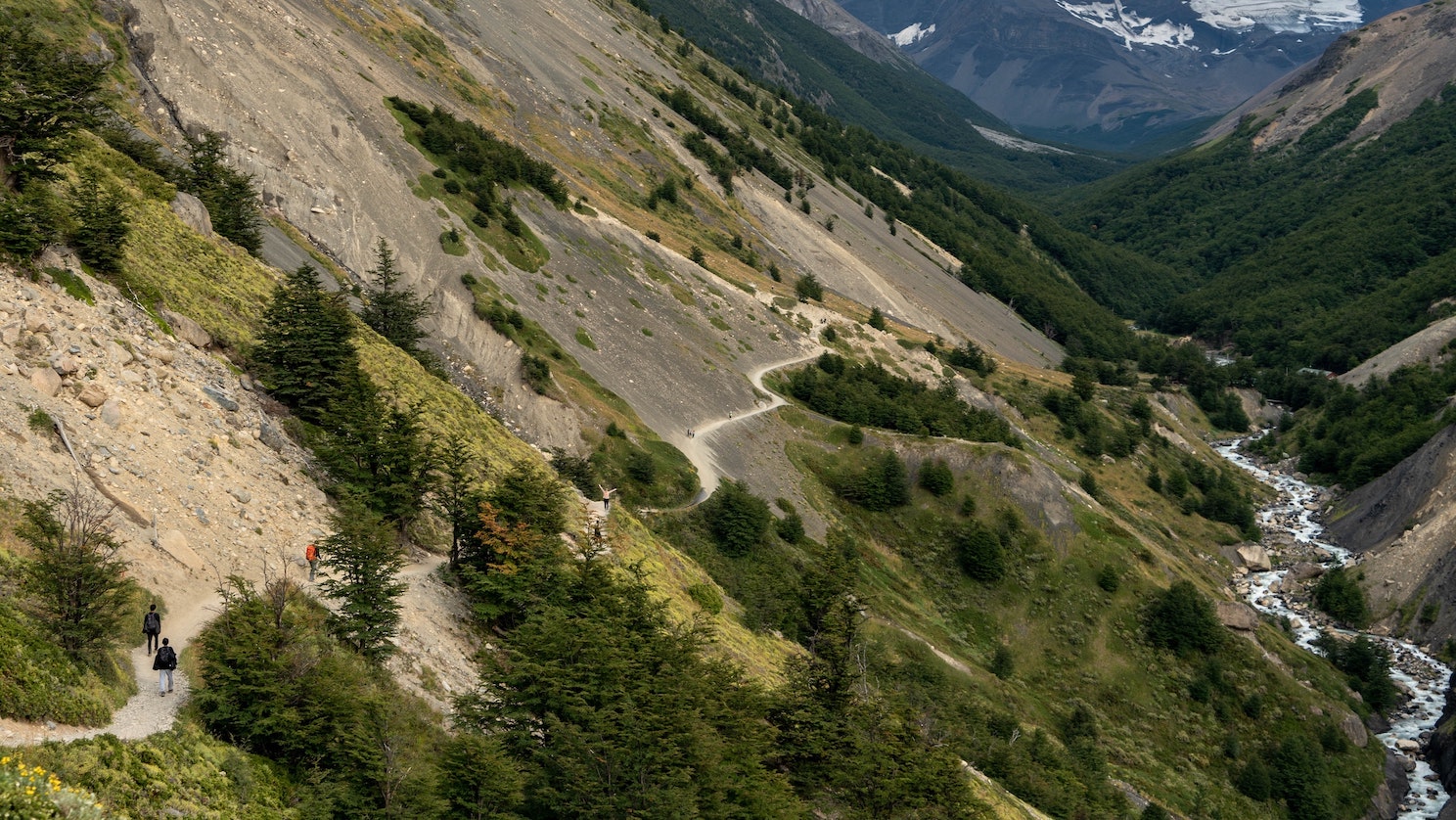
Day 7
Wake up early and set off for the first two and a half hours, 11 km of ups and downs to reach the Paine Grande refuge. You will then have completed the circuit by covering 132 km.
We go back to where we started with the Q mustache, which is nothing but the 16 km from Paine Grande to the administrative headquarters (total therefore 148 km). Pay attention to the bus timetables!
Allow at least 2 and a half hours from Paine Grande and the buses in the low season only leave at 12.30.
Medium-low difficulty
So this is my experience, the whole Q circuit in 7 days and 6 nights. I admit, it was a good pull, but I had the climate on my side, and as long as it wasn't raining or snowing I preferred to grind kilometers.
It is not easy, especially since a week of walking is complicated with the backpack so heavy on the shoulders. The problem is that in Patagonia you have to be ready for any weather, I found myself at minus 15 degrees like walking in a T-shirt.
It is certainly one of the most beautiful and varied treks in the world, highly recommended!
Forse potrebbero interessarti anche questi articoli
Commenti
Nessun commento ancora fatto. Sii il primo a inserire un commento


